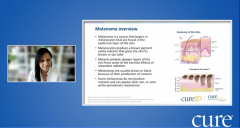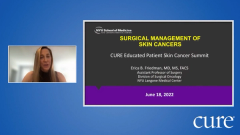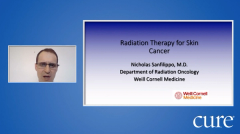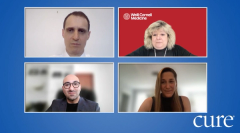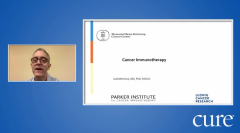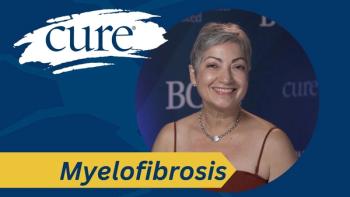
Educated Patient® Skin Cancer Summit Basal Cell Carcinoma/Squamous Cell Carcinoma Presentation: June 18, 2022
Watch Dr. Barbara Ma, from Weill Cornell Medicine, discuss the basics of basal and squamous cell carcinomas during the CURE Educated Patient Skin Cancer Summit.
Episodes in this series
When caught early, basal cell and squamous cell carcinomas — both types of non-melanoma skin cancers — are highly curable, highlighting the importance of early detection. However, once these cancers get to a more advanced stage, they need more intensive treatment that involves a multidisciplinary team, explained Dr. Barbara Ma, assistant professor of medicine at Weill Cornell Medicine.
Ma recently discussed the basics of basal cell and squamous cell carcinomas at the CURE® Educated Patient® Skin Cancer Summit.
“For squamous and basal (cell carcinomas), why they’re categorized differently from melanomas is usually because they’re not as aggressive as we consider melanomas (to be),” Ma said in an interview with CURE®. “When we consider the incidence, squamous and basal (cell carcinoma) are actually 18 to 20 times more common than melanoma.”
Prevention and Early Detection
Individuals can decrease their chances of developing these types of skin cancers by practicing sun safety, such as wearing sunscreen and protective clothing, and knowing about risk factors.
“Chronic sun exposure, if you’ve had lots of sunburns previously, a prior history of another skin cancer or if you have light skin, blue eyes or are immunocompromised, those are all risk factors for having these types of skin cancers,” Ma explained.
If a patient does develop a squamous cell or basal cell carcinoma, it is critical to have it diagnosed and treated quickly. To do so, individuals should undergo regular dermatologic exams and notice any new marks on their skin. If something that seems like a mole is starting to change in any way, that is a good indicator to call a doctor to have it checked out, Ma said.
“Patients know their skin and body best,” Ma said. “Knowledge is power.”
Surgery for Non-Melanoma Skin Cancer
The first line of treatment for basal cell and squamous cell carcinoma is surgery, which can be curative if the disease is caught early enough and the surgeon is able to take out all of the cancerous cells, resulting in a clear area without any cancer cells — something referred to as a “negative margin.”
“When we catch an early stage and (the cancer is) small, it’s mainly surgical excision, and the surgeon will try to get negative margins,” Ma said. “If it’s a larger size, then it may need Mohs surgery, which is just a larger surgery.”
Ma explained that Mohs surgery is a technique where surgeons will remove individual layers of skin and analyze each of them for cancer cells until all the disease has been removed.
Treatment Beyond Surgery
If the squamous cell or basal cell carcinoma is too large to be taken completely out with surgery, further treatment may be needed. This can include radiation, a topical cream or photodynamic (light-based) therapy for superficial lesions.
In more advanced stages when surgery and radiation cannot adequately eradicate the cancer, the dermatology and oncology team work together to determine which drug(s) may be beneficial for the patient.
“The systemic treatments that we may talk about is either chemotherapy or a targeted therapy called (Erbitux [cetuximab]). A lot of these squamous and basal cell carcinomas both seem to express something called EGFR, so that’s when we’ll use (Eribtux),” Ma said.
If those treatments do not work, patients with squamous cell carcinoma may be prescribed a PD-1 checkpoint inhibitor, namely Libtayo (cemiplimab) or Keytruda (pembrolizumab).
For patients with basal cell carcinoma, they may be prescribed a hedgehog inhibitor like Erivedge (vismodegib). Only if their disease gets worse on that drug will clinicians typically suggest immunotherapy for this patient population.
While there are multiple lines of therapy available for this patient population, Ma stressed that it is best to catch the disease early for the best possible outcomes.
“The majority of these cancer are curable and very treatable if caught early,” Ma said.
For more news on cancer updates, research and education, don’t forget to


